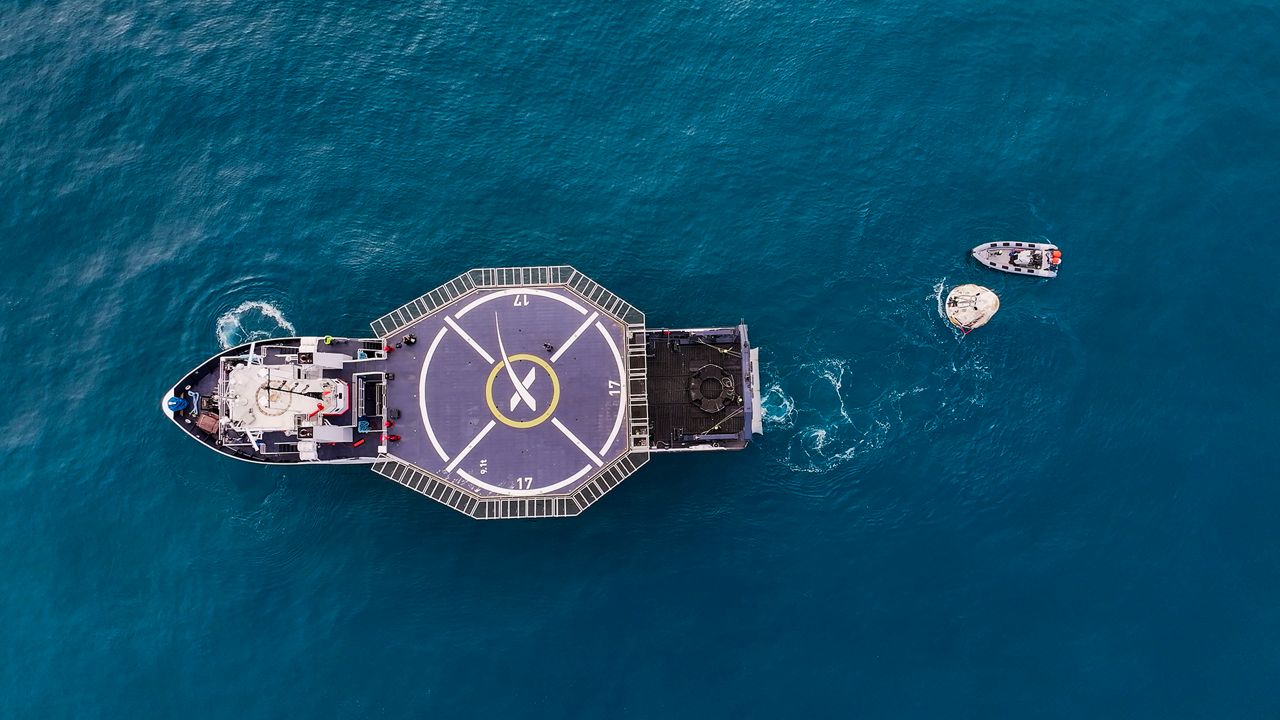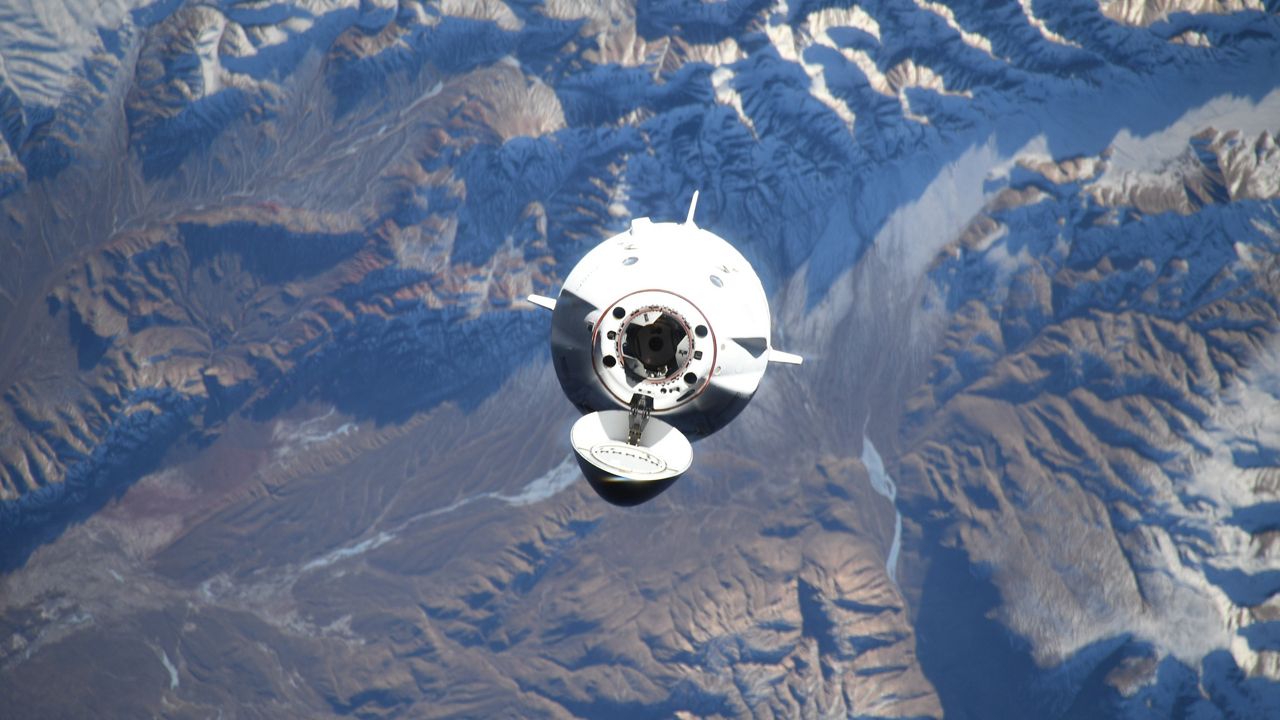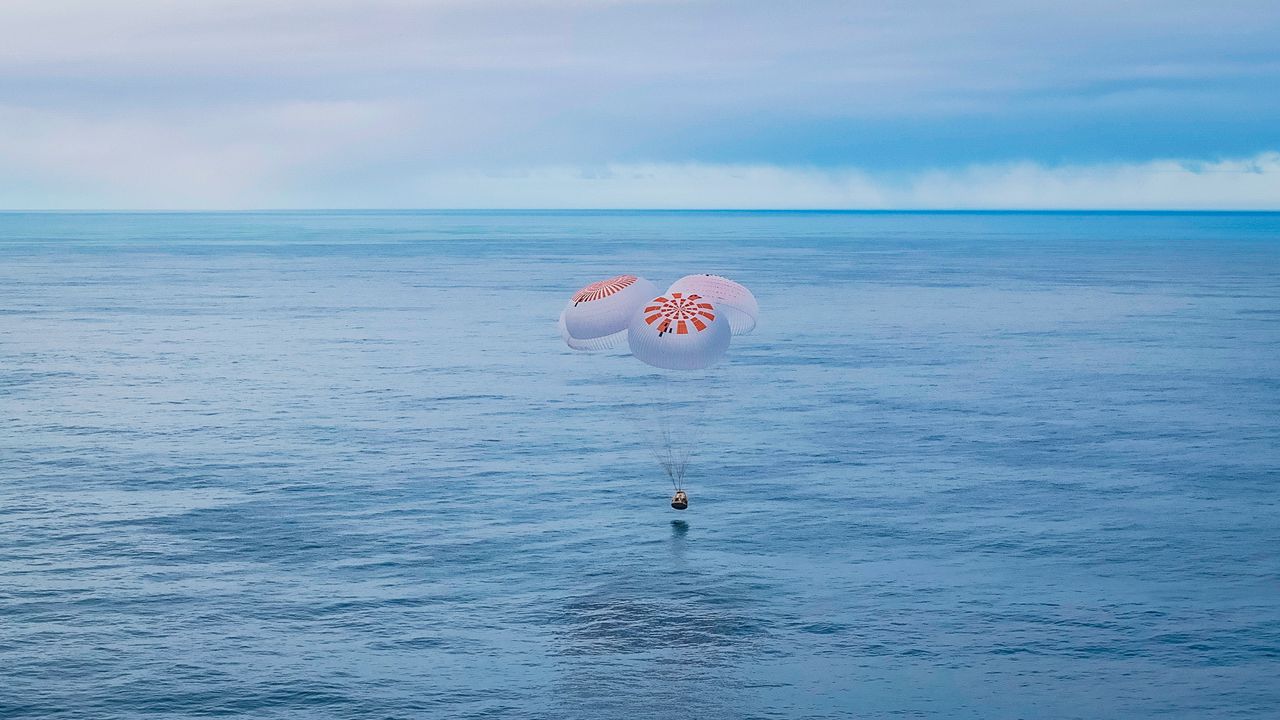FLORIDA — Axiom Space’s Ax-3 crew returned to Earth on Friday, after spending 17 days on the International Space Station.
What You Need To Know
- The splashdown was a success and all the crew are OK
- SpaceX's Dragon spacecraft took Axiom Space's Ax-3 back down to Earth
- Scroll down to read "How the splashdown happened" for the details
- RELATED:
- Get more space coverage here ▶
- 🔻Scroll down to watch the splashdown🔻
Countdown to Ax-3 splashdown
Welcome back to Earth, #Ax3 Crew: @CommanderMLA, @WalterVilladei, @TURKastro, and @astro_marcus. Today, the Dragon spacecraft successfully splashed down, marking the end of their successful mission to the International Space Station. pic.twitter.com/vqaeyOmT87
— Axiom Space (@Axiom_Space) February 9, 2024
Hitching a ride home with SpaceX’s Dragon spacecraft named Freedom, Ax-3 crew Cmdr. Michael López-Alegría, pilot Walter Villadei, and mission specialists Alper Gezeravcı and Marcus Wandt splashed down off the coast of Daytona Beach, Fla., at around 8:30 a.m. ET, confirmed NASA.
The crew members told Axiom Space that they were all OK. SpaceX's recovery vessel Shannon, named after Shannon Walker who was the first female NASA astronaut who flew on SpaceX’s Dragon capsule during the Crew-1 mission, received the crew members.

The Dragon spacecraft's hatch was sealed since it left Earth last month for its mission. Once it was opened, it was the first time the crew got to breathe fresh air in weeks.
Once the four men are checked out by medical professionals, a helicopter will come and land on Shannon to take them back to land.
And all four need to be careful as they move around in gravity again. After spending a total of 23 days in space, many astronauts experience dizziness and land sickness, very much like seasickness. In addition, bone and muscle weakness can be expected since they have not had a lot of use in the micro-gravity environment of the ISS.
How the splashdown happened
The four men undocked from the ISS on Wednesday morning, after spending more than two weeks in the floating laboratory.
#Ax3 has undocked from the International Space Station. 09:20 am ET https://t.co/w7N4LRNczJ
— Axiom Space (@Axiom_Space) February 7, 2024
SpaceX was used to take the Ax-3 crew to the ISS and back down with both its Falcon 9 rocket and spacecraft.
After Freedom undocked from the ISS’s Harmony module, it took a nearly two-day commute back down to Earth.
“After performing a series of burns to move away from the space station, Dragon will conduct multiple orbit-lowering maneuvers, jettison its trunk, and re-enter Earth’s atmosphere before splashing down off the coast of Florida,” SpaceX explained.
For space lovers in various parts of the Sunshine State, it meant they may have caught the Ax-3 flying overhead or at least heard its sonic boom.
Deorbit burn underway. After Dragon reenters Earth's atmosphere, it will fly over Mexico and Florida ahead of splashing down near Daytona, FL at ~8:30 a.m. ET pic.twitter.com/zXlrbm3FHR
— SpaceX (@SpaceX) February 9, 2024
"(Wednesday's) undocking will begin the Ax-3 mission’s journey home with splashdown off the coast of Daytona, Florida, targeted for approximately 8:30 a.m. EST Friday, Feb 9," stated NASA.
And coming back down to Earth was a heck of a ride. Using information from previous splashdowns, here is how it looked: A series of parachute deployments on the Dragon slowed the spacecraft from an orbital speed of about 17,500 mph (2,816 kph) to 350 mph (482 kph) when it reached atmospheric re-entry.
Dragon’s four main parachutes have deployed pic.twitter.com/jBUShcJO5f
— SpaceX (@SpaceX) February 9, 2024
Then the Freedom gently splashed down at 16 mph (25 kph) off the coast of Florida.
Trying to make a splash
Originally, the Ax-3 crew was supposed to undock from the ISS at 6:05 a.m. ET, Saturday but poor weather scrubbed that attempt.
The second try was going to be on Monday, but once again, the weather was a concern. In fact, no time was given for Monday’s try.
And the third attempt, set for 9:05 a.m. ET, Tuesday, was also canceled due to the weather, NASA stated.
Due to ongoing unfavorable weather off the coast of Florida, Dragon is standing down from Tuesday's undocking from the @Space_Station. The spacecraft and Ax-3 crew remain healthy, and teams will continue to monitor weather conditions for the next available undocking opportunity
— SpaceX (@SpaceX) February 6, 2024
The Ax-3 crew was supposed to be on the ISS for 14 days, but due to the weather delays, the men were onboard for 17 full days.
How the Ax-3 mission started

The Falcon 9 rocket — that took Freedom with her four passengers to the ISS where they joined the seven-member Expedition 70 crew – left Launch Complex 39A at NASA’s Kennedy Space Center on Thursday, Jan. 18, 2024.
Axiom Space, a private space company based in Texas, has sent a total of three crewed missions to the ISS. This latest mission, Ax-3, brought with them more than 30 experiments from other companies and universities to be tested.
On the launch day, Axiom Space President Matt Ondler told Spectrum News that commercial space is giving countries, businesses and universities a chance to leave the Earth.
“We think this is probably the future in that, you know, countries want to be involved in space and many have not had the opportunity through the ISS. We are really providing countries this opportunity,” he said.



